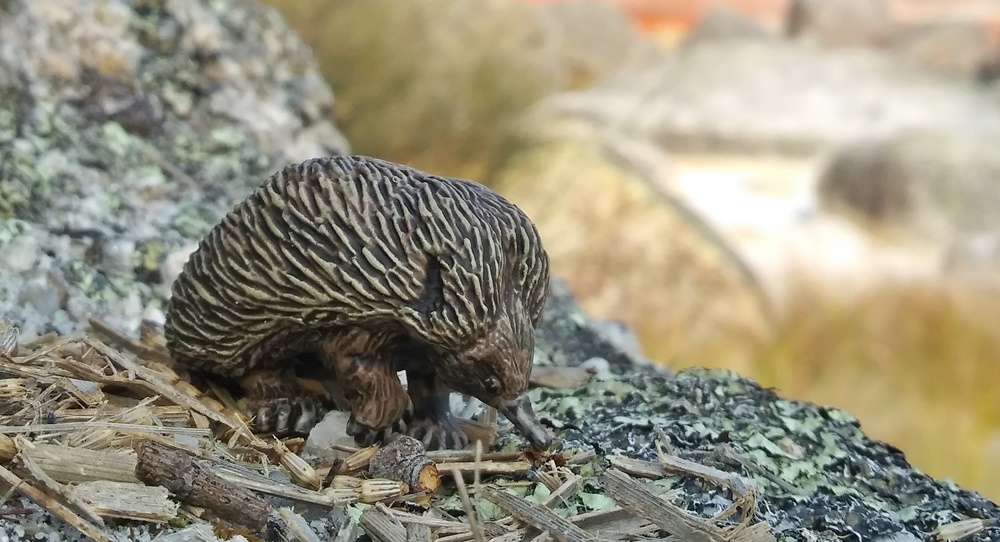Review by Lanthanotus; edited by bmathison1972
If there are oddballs amongst mammals (and there certainly are), the monotremes are heavy competitors for first place. The order Monotremata includes only five extant species, all of which are threatened to different degress. Most popular is the improbable platypus which was first thought to be a faux by those Europeans who only knew it from imported, stuffed specimens. The star of this review is not less weird. Its name tells of its superficial similarity to a hedgehog and while it also feeds on insects, worms and other small invertebrates, it does so through a narrow beak like an anteater and bears claws unlike any other animal I could name.

Despite its primitive features, the short-beaked echidna (Tachyglossus aculeatus) is one of the most resourceful mammals, if you account for its climatic distribution. It inhabits the tropical rainforests of New Guinea from the lower mountain ranges to the coast (its longer beaked relatives inhabit the higher mountain ranges), as well as the whole of Australia, from the tropical flood plains in the north, through the varying deserts, savannas and bushlands to the cool temperate rainforests of the south down to the snowy winter regions of Tasmania. As a monotreme, the echidna lays eggs (better to say one usually) and its offspring – the puggle – hatches with the help of an egg tooth before attaching itself to a specialised patch of skin that begins to secrete milk soon after.

Very few figures are out there to choose from, and while the Science & Nature one certainly has its charm and also is superior in some regards to the Southlands (and has the most unique haptic feeling with those hundreds of blunted spikes), most people would certainly choose the Southlands over the S&N cause it largely succeeds in looking more natural and authentic. Let’s have a closer look.

The figure is tiny, it measures only 4 cm in direct line from the tip of the beak to the tail end and stands a bit more than 2 cm high. The detailing is great for such a small figure and the face especially cute and true to the real animal. There’s even a mouth and nostrils on the square millimeter of the beak’s tip! Now, the major part of the animal, its spiky back, is somewhat misleading about the true looks of the animal. While there is indeed a parting on the middle of the back, in the way as shown here, leading the hairs and spikes of the right and the left side towards the midline, the number and form of spikes is not very accurate. The figure gives the impression of a combed mane, but the real deal has a very moderate number of spikes in comparison with a hedgehog and between spikes is a considerable distance that is filled by fur of varying length, depending on the climate. In the desert, these fur hairs are often quite short, leaving the length of the spikes visible, while in the moderate temperature of Tasmania the fur can be so long that only the tips of the spikes at the back are visible. In any case, the spikes are very straight and much thicker and more pointed than those of hedgehogs.

Another thing to note are the claws, especially those of the hind legs. The placement of the legs and feet is accurate in the Southlands figure with the palm facing slightly outwards. Also, the claws are of varying length, but in reality the second claw is not only largest but so long and curved that it ends behind the foot. The third claw is also very long and ends behind the foot, number four and five in fact face backwards.

All that being nitpicked, I still highly value this figure for the most accurate version of that remarkable animal on the market, and it will most likely take a while until we see a better rendition. Also, as the echidna measures up to 45 cm in length and is of considerable mass, the figure scales quite good to other mass-produced figures of the Australian fauna.
Disclaimer: links to Ebay and Amazon on the AnimalToyBlog are affiliate links, so we make a small commission if you use them. Thanks for supporting us!




Cute figure and very nice review, location looks like an amazing place.
I like how you added other animals that shared the landscape.